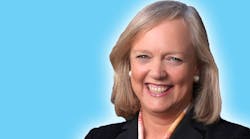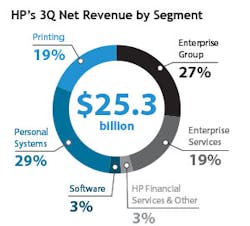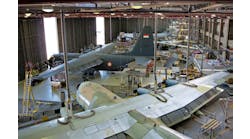Splitsville: Hewlett-Packard's Plan to Divide and Conquer
The breakup of Hewlett-Packard (IW 1000/27) into two companies is not one of those splits that cause anguish in Silicon Valley's social pages. If anything, analysts want it to hurry up.
On August 20, HP announced results for its fiscal 2015 third quarter. The Palo Alto, Calif.-based firm had revenue of $25.3 billion, an 8% drop from the third quarter in 2014. That drop is not an isolated event -- the company has seen revenue decline for the past five years.
Last October, CEO Meg Whitman announced that the computer software and systems giant would split into two roughly equal-sized firms. Hewlett-Packard Enterprises will comprise the company's enterprise technology infrastructure, software and services businesses. The second firm, HP Inc., will include the firm's legacy personal computer and printer businesses, and retain the current HP logo.
"The decision to split Hewlett-Packard into two companies is the correct one," says Greg Collins, founder and principal analyst at Exact Ventures. He said "the synergies between PCs and printers and datacenter technologies, products, and services are weak." And he said the split will enable management and employees to have a "greater impact on the overall performance of their company, leading to greater focus and more success for each individual company."
"HP's move to split into two businesses is not novel," noted Joseph Pastore, professor emeritus at Pace University's Lubin School of Business in New York and an expert on corporate strategy. "Motorola did it circa 2011. The strategy is a response to firms that find themselves in rapidly changing businesses where part of their business is founded upon their legacy and historical repertoire and another part is cast upon an emerging business or direction for the firm."
In its earnings statement, Whitman said the company was tracking on course "to execute one of the largest and most complex separations ever undertaken." HP is a behemoth, with 302,000 employees, a market cap of $49 billion and suppliers in more than 45 countries. Approximately 65% of HP's sales come from outside the U.S.
In an Aug. 21 interview with CNBC's Squawk Box, Whitman said HP was already "effectively operating as two separate companies, operationally, all our IT systems. So we're invoicing separately and collecting cash separately. We've got separate supply chains."
Whitman, who had initially resisted splitting the company, insists that HP is not creating a weak sister by separating out the PC and printer business. She told CNBC's Jim Cramer that HP's personal computer business is first in the commercial PC business, second in overall PC share and, with the advent of Windows 10, will "come back over the long term," though she said there would be "a couple of difficult quarters ahead."
As for the printer business, Whitman said it had been impacted by currency valuation shifts, but maintained it is "one of the great all-time businesses in the world."
"By all appearances, HP appears to being doing an admirable job in terms of executing on a very difficult business strategy; breaking HP into two different companies while still trying to maintain a healthy focus on innovation, competitiveness and partner and customer success…" says Michael Kerman, vice president of Business Management at Revitas.
Todd Antonelli, a managing director at Berkeley Research Group, said increased focus after HP splits should help the company. He said the printer business, for example, has been slow to move into 3D printing. And he noted that while HP states an ambition to be a leader in PCs, when he goes into a Starbucks, "I see very few HP laptops."
But concerns remain about HP's ability to drive growth in very challenging markets. In an Aug. 21 interview with CNBC, Brian White, an analyst with Cantor Fitzgerald, warned, "I think the company is going to continue to be challenged whether it's standalone or separated. Their markets are commoditizing quickly, and that's about 70 to 80% of this portfolio. And if you look back, they haven't been able to grow profits."





